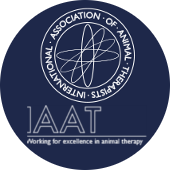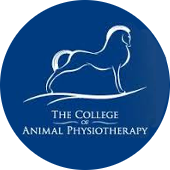Tendon injuries
To look further into this all too regular injury, it will help to understand the anatomy of the distal (lower) limb of the horse. Horses’ legs are an exquisite example of biomechanics, but they are also extremely complicated!! The first thing is to understand the difference between a tendon and a ligament, where they are placed in the distal limb and what their function is.
A tendon is classed as a ‘fibrous cord of connection tissues that attaches muscle to bone’, with a ligament attaching bone to bone. They are both made of dense, fibrous tissue that consist of parallel bundles of coarse collagen fibres.
It may sound obvious to you, but horses have NO MUSCLE at all in the distal limb. The tendons and ligaments have huge tensile strength and play a vital role in the ‘coil and spring’ system of the horses’ legs. They store energy and then release is back up the limb resulting in forward momentum.
The tendons in the distal limb are categorised into ‘extensors’ and ‘flexors’. Those that ‘extend’ the limb and those that ‘flex’ the limb. The extensors run down the front of the limb, and the flexors down the back. The three most well-known, and commonly injured tendons, are the deep digital flexor, superficial digital flexor and common digital extensor. These can be injured in a multitude of ways, and there can also be damage or degeneration to the tendon ‘sheath’ or ‘bursa’, but we’ll cover that in another article. However it might be interesting to know that the commonly seen problem of ‘windgalls’ or ‘wind puffs’ are when the lower portion of the sheath becomes filled with excess fluid.
When the horse is weight baring (at rest), you can really see the structures of the leg. The cannon bone at the front and then the flexor tendons and suspensory ligament. These are often thought to be bone, as the tensile forces when the horse is standing makes them almost as solid as bone. The best way to feel them is to rest your horse’s foot in your hand and then palpate up and down the tendons with your finger and thumb. They should feel soft and moveable with no heat or lumps and bumps.
As touched on in a previous post, most forelimb lameness actually originates in the foot. This could be anything from an abscess, to navicular disease. If your horse is showing signs of lameness, or a subtle loss of performance, and you’ve ruled out foot problems, the next line of investigation are the tendons and ligaments of the distal limb.
It is good practice to check your horse’s limbs on a daily basis. I like to check my patients (and my own horse) daily, especially if they’re in heavy training, going through a change in training or have had a strenuous session.
The easiest issues to spot are the bowed tendons, these are grossly inflamed, with lots of hard, hot swelling and the horse will be significantly lame. It’s the most subtle injuries that take the time to spot! If you are in any way concerned about any changes to your horse’s legs, call the vet IMMEDIATELY!
If you are unlucky enough to experience one of these types of injury, your veterinarian will likely prescribe a period of rest, with perhaps some therapy. Shockwave and stem cell are the two most popular at the moment. These can only be carried out by a veterinarian.
As a physio, I can go a long way to assisting in the rehab of a tendon or ligament issue. We have many modalities at our disposal that have had miraculous results with horses with tendon problems.
Ultrasound can be used to re-align the strong collagen tissues that make up tendons and ligaments, as the scar tissue is laid down in a haphazard fashion over injury sites, making them more prone to re-injury. Regular, short bursts of ultrasound over a tendon injury can speed up recover and lessen the likelihood of another injury.
Also a specific exercise plan created with the physio and veterinarian can go a long way to bringing the horse back into work safely. It also helps with their mental well-being, especially if they’ve been on a long period of box rest. The horse will inevitably have large amount of muscle atrophy and possible mental issues manifesting in repetitive behaviours like box walking or crib biting.
Physio can also assist in keeping the horse’s soft tissues loose and pain free whilst on box rest. Stretching, massage and joint mobilisation are like yoga for horses, stopping muscle atrophy, tightness and pain.
Unfortunately, due to the lifestyle our modern horses inhabit, tendon and ligament injuries are on the rise. However it doesn’t mean end of their useful lives and many horses will go on to compete to a high level, if a sensible rehab plan is followed and the horse isn’t rushed back to work.



